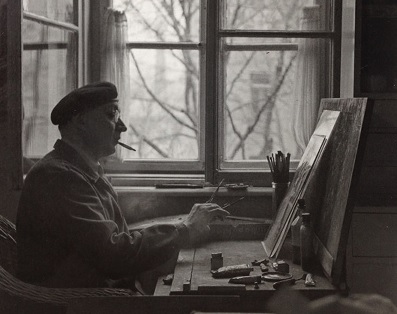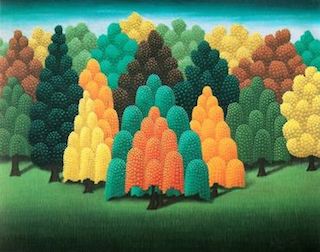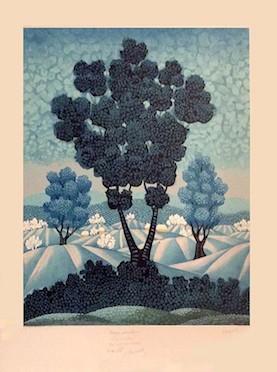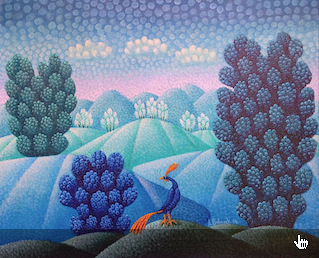Antun Bahunek (1912-1985), originally from Varaždinske Toplice, developed a distinctive and recognizable expression in the painting of the landscape of his homeland, which is a version of pointillism. He placed small circles next to each other, thus creating idealized landscapes. In his youth, he studied to be a church painter in the workshop of the decorative painter Dragutin Samobor, who studied at the Vienna Academy.
 Under the influence of naive currents, he slowly turned to naive art and became one of the most recognizable painters in that scope in the former Yugoslavia.
Under the influence of naive currents, he slowly turned to naive art and became one of the most recognizable painters in that scope in the former Yugoslavia.
From 1946 he actively participated in the work of the art section of the Workers' Cultural and Artistic Society "Vinko Jeđut", led by painters Mladen Veža and Pavao Gavranić. As a member of the section, he exhibited in many cities in Yugoslavia and abroad (Netherlands, Belgium, Finland, Austria, Italy, France, etc.). He exhibited for the first time in 1957, organized by the Gallery of Primitive Art in Zagreb, and since then he has participated in many group exhibitions, among which are: Naive Artists of Yugoslavia, Belgrade 1957; International Exhibition of Naive Painting, London 1967; Naifs of Yugoslavia, Rome 1971; Les peintres naïfs contemporains, Brussels 1972; Painture naïve internationale, Paris 1973; 9th Exhibition of the Croatian Society of Naive Artists, Zagreb 1973; Naive Art of Yugoslavia, Bruges 1974; 9th Zagreb Salon, Zagreb 1974; 10th exhibition of the Croatian Society of Naive Artists, Zagreb 1975; Winter Colony 76, Karlovac 1976. He had solo exhibitions in Paris (1971, 1972), Križevci (1972), Zagreb (1973, 1980), Trebinje (1977), Zlatar (1978). He had a retrospective exhibition in 1976 in Varaždinske Toplice.
His themes are landscapes and city views, mostly of Zagreb, which he brings flat on widely conceived surfaces, with intense colors, most often blue and red (Popov Park and Children's Playground, 1957; Flowers, 1958). From Theater in the Night (1963) to Blue Winter (1971), the process of stylistic formation and independence continues.
 The search for his own expression is manifested in the variation of the palette (from intense colors to monochrome) and the choice of motifs (rustic or urban themes). In the early 1970s, he calmed down and hermetically locked himself in his own poetic world. He painted with oil on canvas.
The search for his own expression is manifested in the variation of the palette (from intense colors to monochrome) and the choice of motifs (rustic or urban themes). In the early 1970s, he calmed down and hermetically locked himself in his own poetic world. He painted with oil on canvas.
He is one of the founders and president of the Croatian Society of Naive Artists. *
_________
* Source: Miroslav Krleža Lexicography Institute, Croatian Biographical Lexicon



